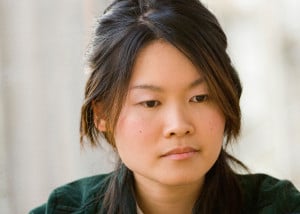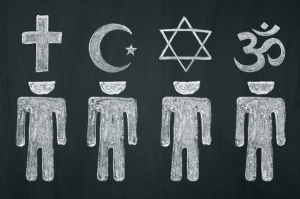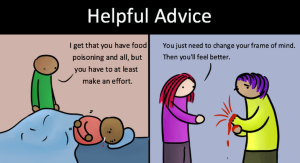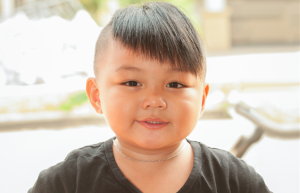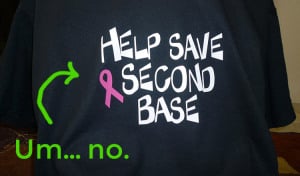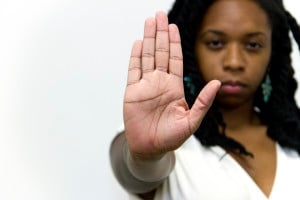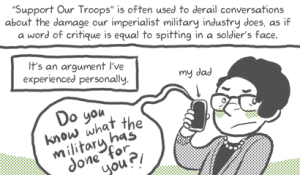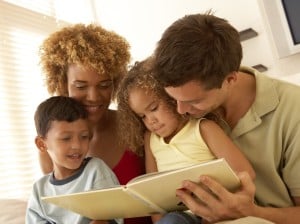
Source: Bossip
According to my mom, when my brother was around four or five, my Black (African-American) paternal grandfather put a plate of rice and beans in front of him.
My brother immediately burst into tears and asked, “Why do the beans look like that?” and then refused to eat. My brother’s problem was that my grandfather hadn’t given him traditional Puerto Rican arroz con gandules, but rather white rice and black-eyed peas.
My mom always says that my brother continued to cry and ask, “Why are the beans looking at me?”
The story goes that my grandfather got upset and said, “This is Black food! You’re Black! This is our people’s food!” My brother continued to cry, saying over and over again that he was Puerto Rican, and he wanted real rice and beans. Although I don’t personally remember this happening, I think about this story a lot.
Growing up as a mixed person – my mother is mestiza and Afro-Puerto Rican and my father is biracial – has been complex.
The ways in which I think about my identity and history have shifted substantially over the years. Where I once just laughed at this story, now I think about the nuances of culture when it comes to being from a multiracial family.
Even though both of my parents are mixed, I never really heard them talk about racial politics. My mom would simply say that she’s Puerto Rican, and my father would often just identify as Black.
But I never really knew what that meant for my brother and I, especially as I got older and learned that Latinx was not a race. It didn’t help that everyone in my family had an opinion on the matter. Even my parents, who are both mixed, decided it was their responsibility to label me:
“You’re just Puerto Rican, because that’s what your mother is.”
“You’re mixed. You can’t identify as Black because that’s dishonest.”
“Why are you saying you’re mixed? Girl, you’re Black.”
“If you’re only half Puerto Rican, you’re not really Puerto Rican.”
The problem was that rather than helping me to form and shape my own identity, family members simply tried to place labels onto me.
Oftentimes, their comments were hurtful because they invalidated my personal experiences. They also erased aspects of my identity by telling me what was okay for me to say I was (and what I wasn’t). For such a long time I felt like I didn’t really have any say in who I was, because everyone else was too busy making the judgment for me.
If you’re planning on having a mixed child, it’s important to let them explore all aspects of their identities.
Mixed children are not like Build-A-Bears. You can’t just decide that you want your child to look, act, or identify a certain way just because you want them too.
Multiracial people are not objects; we’re our own people with different relationships to cultural backgrounds and labels.
Below are a few steps that parents and family members of mixed children can take in order to support them in finding the identity that’s right for them.
1. Stop Expecting Your Child to Look a Certain Way
There was once a time when I actually thought “Mixed children are the most beautiful, I can’t wait to have one of my own!” was a compliment.
Now, it makes me shudder.
Most people have this belief that mixed people all look exactly the same way: caramel skin, loose curly hair, and light-colored eyes. There are a lot of memes about folks wanting to have mixed children simply for this aesthetic reason. Adults proclaim that this kind of child is the most beautiful.
There are a number of problems with this kind of fetishization.
Expecting multiracial children to all look one way not only homogenizes a large group of people, but it is seeped in Eurocentric beauty standards and exotification.
Oftentimes, when someone thinks of this imaginary child, they assume that one white parent must be involved. The image that many folks have of mixed children is a product of white supremacy. They think that white (European) features are the most desirable.
This is also true for children who have two parents of color as well. The child is seen as even more exotic. For example, I’ve seen many People of Color say that they want to have a “Blasian” baby because they’ll “grow up to be hot.”
The reality is that there is no way to tell what a mixed child would look like.
I know from many other mixed folks that have Afro-textured hair or darker skin that their families make anti-Black comments about the way they look.
Having this unrealistic expectation of what all mixed children should look like is harmful; it can cause internalized racism in that child. Whether you are aware of it or not, your comments on a child’s hair, skin tone, eye shape, or any other physical feature does not go unnoticed.
Children internalize the beauty standards and images that adults place onto them.
Mixed children are not objects. Too often, it feels like parents and guardians forget that. You need to know and be aware that any child you have could look a million different types of ways.
Furthermore, it’s just gross to treat your child like a trophy.
2. Stop Making Prejudiced Remarks at Your Child’s Expense
Do you know how many times I’ve seen people defend the racist things they say by writing, “But my partner/child is Black! I can’t be racist!” on my Facebook newsfeed?
There are other variations of this statement, of course, but it comes down to this: Having a mixed race child doesn’t automatically free you of all the prejudiced stereotypes and ideas that you’ve had about a certain ethnic or racial group.
And while I’ve seen this a lot from white parents, this is for guardians and family members of color, too. Unlearning racism and prejudice is a process; your assumptions don’t just go away.
Many people assume that having a mixed child means that the world is free of racial bias – but they forget that mixed children have always existed, and sometimes that’s because of sexual assault and rape.
Having children does not deconstruct racist institutions or ideologies. For example, there were many biracial children that were born because of white plantation owners raping enslaved Black people.
While this might seem like an extreme example, it also applies to today. If your partner or child is a different race than you – especially if you’re white – it’s going to take hard work to unlearn your prejudices.
The fact of the matter is that mixed children do experience prejudice and racism, and it can be harmful to consistently hear prejudiced remarks at home about a vital part of our identity.
In my own life, I often experience prejudiced remarks come up in the form of microaggressions or “jokes.”
A non-Latinx family member might say something like, “The only reason why you’re so angry is because you’re Puerto Rican! Your people are so hot-blooded!”
Or someone will make an off-hand anti-Black statement like, “Those protesters are acting like animals” before turning back and apologizing to say, “but you’re not like that.”
Decolonizing your way of thinking can be hard, and it’s supposed to be. Because repeat after me: Mixed children are not the cure for racism!
3. Learn About Your Child’s Culture(s)
“I don’t see race” is a phrase I have come to absolutely loathe. Unfortunately, I’ve seen many monoracial parents use it as an excuse for how their mixed race child is “normal.”
But what I always interpret it as is “My child’s cultural, racial, and historical background isn’t important enough to learn because they’re only half.”
Children have a right to learn about their environments and their cultures. But oftentimes what happens with mixed children is that parents will choose which race the child should identify with.
We live in a world that is rooted binary ideologies – you can only be one thing or the other. So then what happens is that a child feels like they have to only choose one culture and situations like my brother crying over the “wrong kind of rice” occur.
If your child is mixed, it’s part of your responsibility to teach them about where they come from, even if that’s not where you come from.
Children have a lot of questions about who they are and their backgrounds. As a mixed adult, I can honestly say that many of my questions were never answered.
Sometimes it feels like parents are afraid to learn themselves, or they just don’t see something as important.
I was raised by a fabulous single mother. However, she really only taught me about aspects of Puerto Rican culture. There’s so much about my father’s family and racial and cultural background that I just don’t know.
It’s important to learn and share with your children about all aspects of their identity. It will help them to be less confused, and more proud, of who they are and where they come from.
4. Support Your Child’s Labels
“My child isn’t Asian. I’m white, so she’s also white!”
“My children are only half, so it only makes sense for them to identify as mixed!”
Statements like these seem logical on the surface, but in reality, they’re very harmful.
The way we label ourselves are important because they show the world how we identify. Furthermore, there is power in self-naming. We’re able to connect with terms that match our experiences and senses of self.
But oftentimes, mixed children have their identities policed. This is not only done by parents, but other family and community members as well. And although it’s not particular to white parents, I notice more often than not white people becoming upset when their mixed child does not identify with whiteness at all.
The reality is that mixed people identify in millions of different ways, depending on where they’re at in their lives, what they look like, what family they feel closer to, and a ton of other factors.
Mixed children should have the freedom to explore all the different labels out there because only they know what their experience has been.
It’s important to remember that oftentimes, how someone identifies doesn’t have to do with their parents. I’m speaking specifically to white guardians now: A mixed child rejecting the label white doesn’t mean they’re rejecting you.
It’s perfectly okay if your child doesn’t identify as half white, part white, mixed, or any other label.
Mixed children are People of Color. So unless your child is white-passing, they will not be racialized as white. When you’re not perceived as white – regardless of having one white parent or not – you will experience racism on a personal and institutional level.
I know a few friends – all of whom have one Black parent and one white parent – who identify just as Black for this reason. Even when folks find out they have a white parent, they are still perceived as Black. They experience anti-blackness and other forms of racism that their parents cannot protect them from.
Choosing to identify as Black isn’t a rejection of their white parents or heritage. Rather, identifying that was is an affirmation of their lived experiences.
The way I describe my ethnoracial background has shifted as I have gotten older and learned more about myself and systematic oppression.
The important part to me was that I made the decision for myself how I wanted to be identified. It was liberating to label myself because I was making the active choice of what communities have supported me and whom I feel most comfortable with.
I was able to imagine myself out as a whole person, rather than a pie-chart, split up into percentages.
***
Identity is complex for everyone. But for mixed folks, it can be difficult to define ourselves and figure out where we belong without the support of family and community.
It’s important to remember that your role is not to judge a mixed child or label them, but to help them figure out who they are – and maybe who they will become.
From Maria Root’s Bill of Rights for People of Mixed Heritage: “I have the right not to justify my existence in this world.”
[do_widget id=’text-101′]
Jennifer Loubriel is a Contributing Writer for Everyday Feminism and a mixed race Afro-Puerto Rican from the Bronx. She is also a queer mujerista and child abuse survivor. She earned her B.A. from Oberlin College in Religion and English, and identifies as an amateur Latinx ethicist and a speculative fiction enthusiast. She is a co-founder and moderator over at the Tumblr Women of Color, in Solidarity, a safe space for and by women of color. You can usually find her writing about apocalypse and diaspora, rewatching her favorite TV shows, or taking selfies with her family’s cat.
Search our 3000+ articles!
Read our articles about:
Our online racial justice training
Used by hundreds of universities, non-profits, and businesses.
Click to learn more
Most Read Articles
- « Previous
- 1
- …
- 30
- 31
- 32







